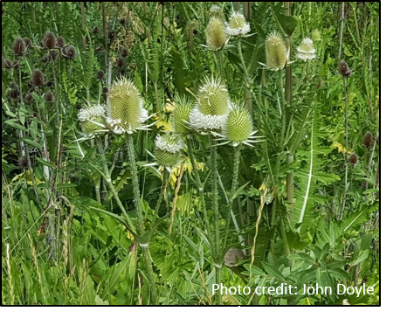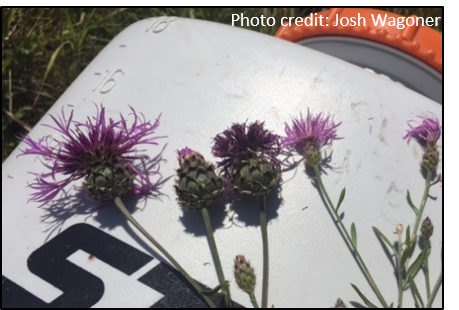Schutter Diagnostic Lab: 2016 Plant Identification Summary

John Dyle
Introduction
The Schutter Diagnostic Laboratory (SDL) at Montana State University (MSU) is provided through MSU Extension. Services of the SDL include identification of weeds and other plants, mushrooms, plant diseases, insects, insect damage, and abiotic problems. We also provide science-based integrated pest management recommendations. We receive samples from MSU Extension agents, weed district coordinators, homeowners, farmers, ranchers, consultants, and others interested in plant issues.
Plant identification activities
In 2016 we processed 400 physical specimens and 160 email or text photos for plant identification. Clients submitted plants with a variety of questions including whether a plant might be noxious or invasive, toxic, or high quality forage. Forty eight percent of specimens were exotic plants, representing 160 unique species. Commonly submitted exotic species were roving bellflower (Campanula rapunculoides), common blue mustard (Chorispora tenella), and cheatgrass (Bromus tectorum). Native plants accounted for 32% of specimens, representing 121 unique species. The most common native species submitted were dotted blazing star (Liatris punctata) and chokecherry (Prunus virginiana).
|
Species |
County |
Priority |
|
Bohemian knotweed |
Silver Bow, Toole (first reports) |
1B |
|
Canada thistle |
Broadwater, Cascade |
2B |
|
Dalmatian toadflax |
Lewis and Clark, Ravalli |
2B |
|
Eurasian watermilfoil |
Gallatin |
2A |
|
Field bindweed |
Beaverhead, Yellowstone |
2B |
|
Hoary alyssum |
Gallatin, Sweetgrass |
2B |
|
Houndstongue |
Cascade, Phillips, Ravalli |
2B |
|
Purple loosestrife |
Valley (first report) |
1B |
|
Rush skeletonweed |
Beaverhead (first report) |
1B |
|
Russian knapweed |
Judith Basin, Ravalli |
2B |
|
Spotted knapweed |
Gallatin |
2B |
Noxious weed identification
Twenty-one specimens of Montana state-listed noxious weeds were submitted representing 11 unique species (Table, left). Several species submitted for identification were priority 1B species, meaning they have limited distribution in Montana and early detection of these species is important. These species included Bohemian knotweed (Polygonum x bohemicum), purple loosestrife (Lythrum salicaria), and rush skeletonweed (Chondrilla juncea). To our knowledge four of the reports for Priority 1B species were first reports for a county (Table, left). We also received specimens suspected of being high priority noxious weeds that were not. For example, three specimens suspected to be common reed (Phragmites australis spp. Australis) were submitted and all of these samples were identified as the native subspecies (P. australis spp. Americanus).
Other notable samples
One specimen submitted in 2016 was a new species for Montana. This species was cutleaf teasel (Dipsacus laciniatus: photo, top right), which is listed as a noxious weed in Colorado, Iowa, Missouri, and Oregon. We confirmed the first report of greater knapweed (Centaurea scabiosa: photo, right) in Cascade County.

Josh Wagoner
Additional information
If you have a plant you would like help identifying, you can 1) take the plant to your county or reservation Extension agent (for Montana residents) or, 2) submit a sample to SDL for identification. This is a free service for Montana residents, and out-of-state clients will be charged a fee. You can find contact information, submission instructions, fee information, and forms online at www.diagnostics.montana.edu.
